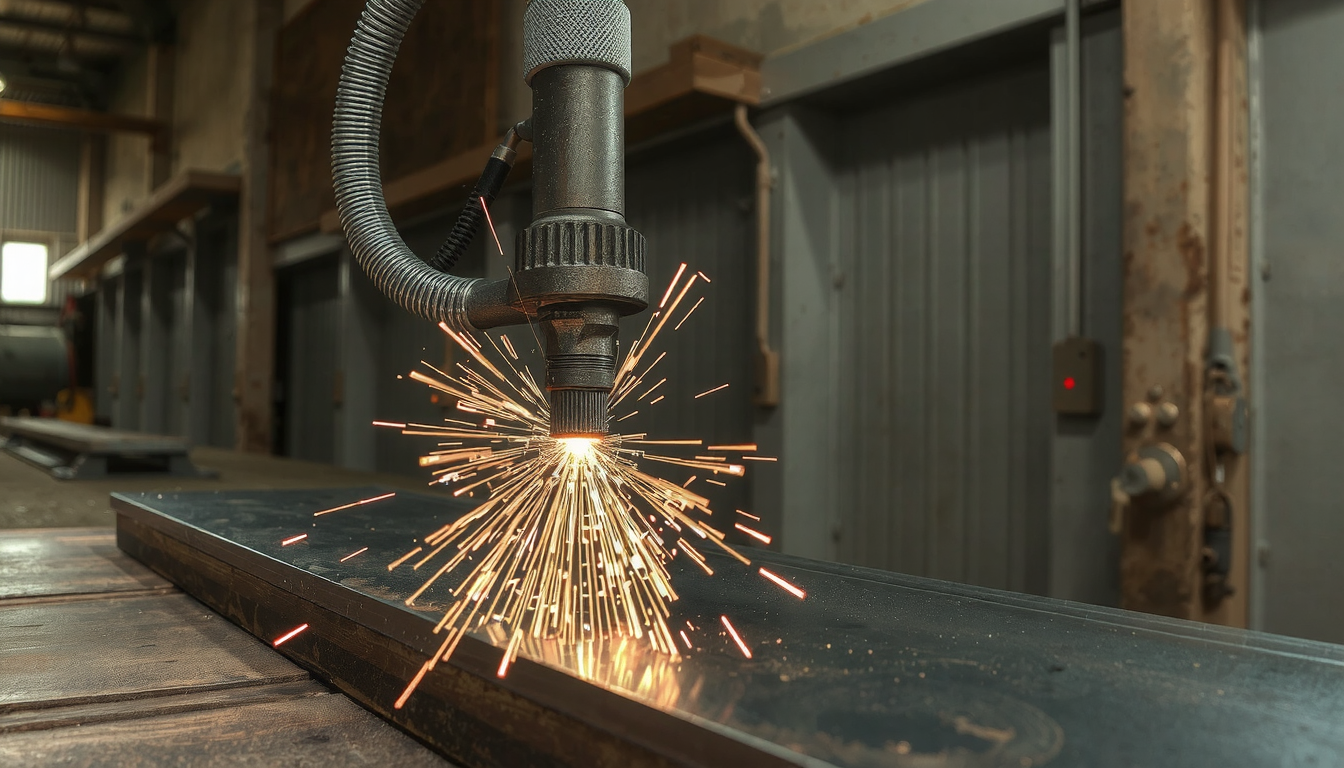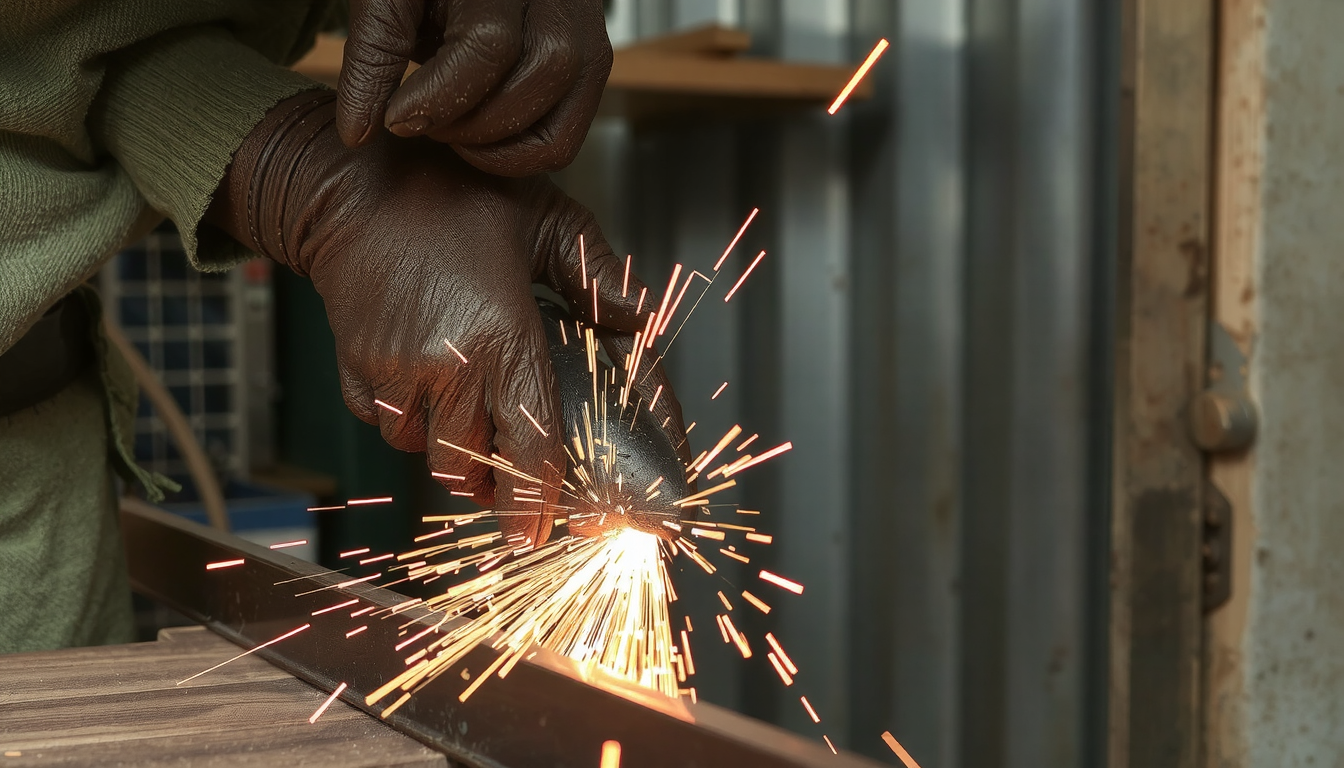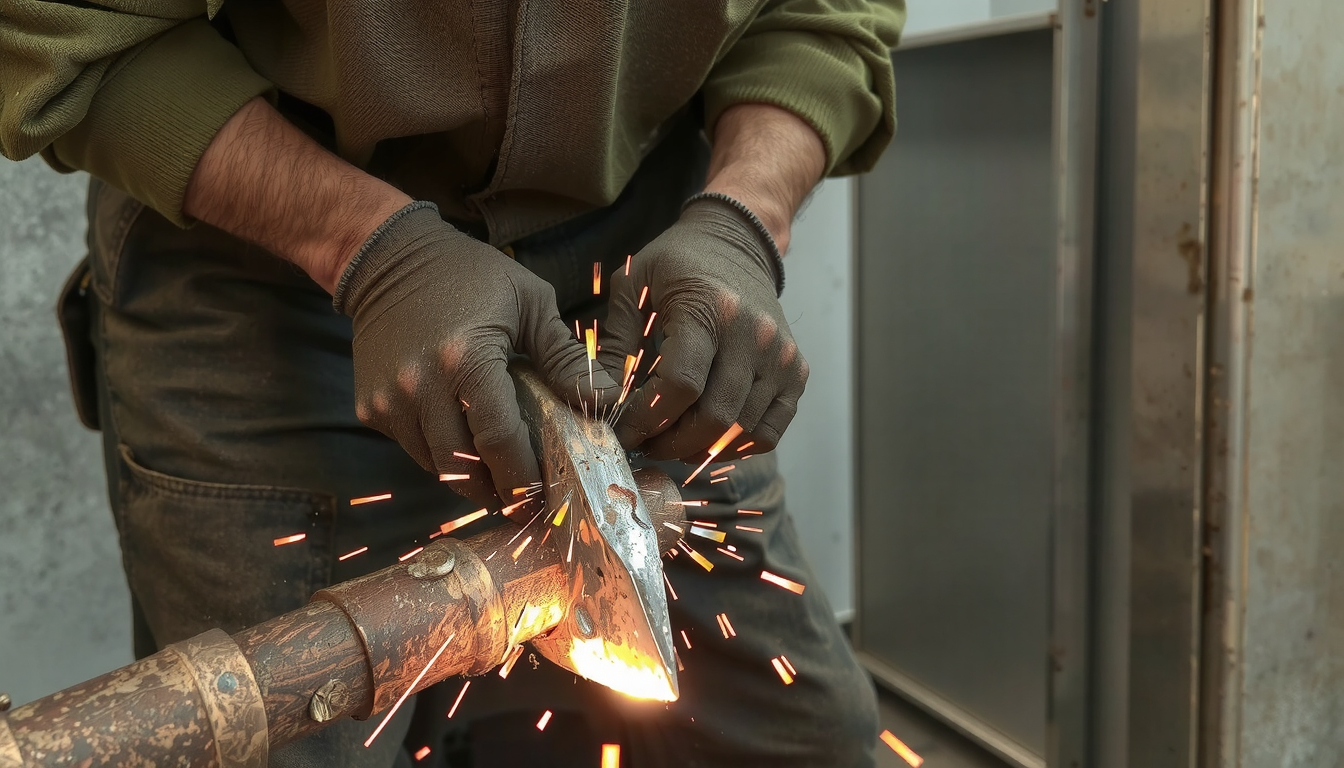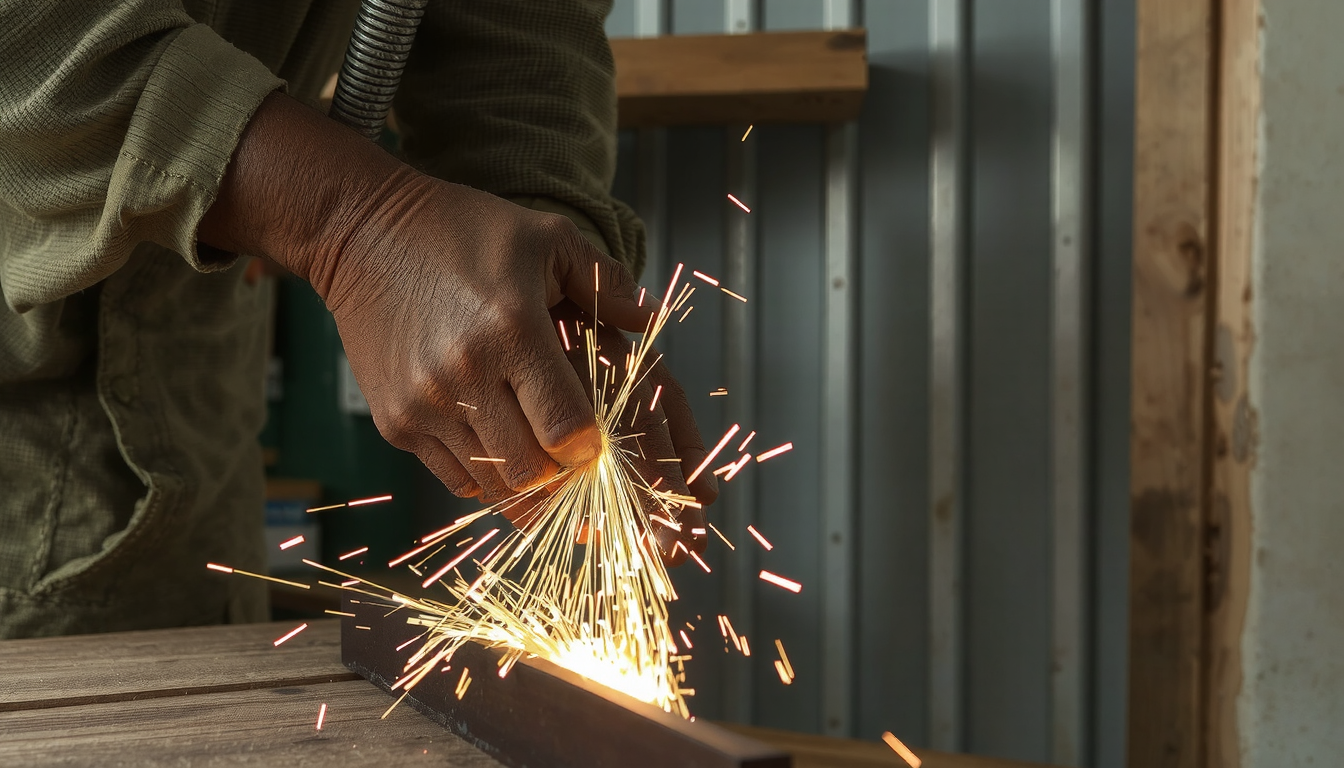Section I: Metal Bending on a Shoestring

Do you find the need to produce a clean bent sheet metal? This is a common necessity in many projects, for instance, car repairs and custom brackets. Usually, people think that they need an expensive press brake machine for such a task. But the truth is you don’t need one. Actually, it is an essential skill for a DIYer to know how to bend sheet metal without a press brake.
The possibilities we are going to discuss will also be proved by people who used them successfully. We will use the basic tools that you most probably already have in your workshop. The methods we will cover realizations of one form or another such as workbench, vice, and even an object you can build yourself.
With just dedicated practice, you can produce quality results at a reasonable expense. Let’s start.
Safety First: Key Safety Steps for Metal Bending
Before starting with cutting or bending, we should first go through safety issues. The sharp-edged sheet metals can be very dangerous. Spent a few minutes to make a setup to prevent serious injuries. As a rule, you should always prioritize safety in your workshop.
Here are the main safety precautions we always implement.
-
Personal Safety Equipment:
- The essential item is the thick leather gloves. Freshly cut or bent metal edges are as sharp as knives.
- Safety goggles or a face shield are protective measures for your eyes against tiny metal pieces that can fly off during work.
- Sturdy sneakers with closed tips serve as a barrier to your feet from dropped tools or materials.
-
Work Area Safety:
- Always ensure that the metal piece you are working on is securely clamped before applying force. A metal piece that slips can be dangerous.
- Make sure to clean and arrange your work area to avoid tripping.
-
Material Handling:
- Sharp edges are always a concern. After a cut or bend, you can use a file to smooth your edges so they be easier to handle.
The Basic Toolkit: Common Tools for Bending Without a Brake
Not much is needed to get along. Before you can learn how to bend sheet metal without a brake prepare the necessary gear. The whole process will go easier and faster if you’re fully equipped.
Here is a list of tools we will use in the following methods:

-
Clamping: Good and strong C-clamps are a must. Locking pliers (called Vise-Grips) and also a reliable bench vise come in handy while holding your work.
-
Bending Aids: You will need tools that are able to provide a straight line and clean bend. The first ones are two pieces of thick angle iron. Blocks of hardwood are also great for protecting the metal’s surface. Steel pipes of different diameters can be put together for bending.
-
Striking Tools: You will need a hammer or a mallet. Soft rubber or plastic mallet is best for not denting the metal. A dead-blow hammer, which is filled with sand or shot, gives a solid hit with no bounce. A ball-peen hammer can also be useful.
-
Marking & Scoring: Your bend line needs to be properly marked with a sharp scribe or a marker. For a particular method, you may also require a utility knife or an angle grinder with a cut-off wheel to score the metal.
-
Measuring: Precision is the key. To ensure that your marks and bends are perfect, you need a tape measure, a steel ruler, and a framing square.
4 Proven Methods for How to Bend Sheet Metal Without a Brake
It is the time to have fun. Here are four effective sheet metal bending methods. You can use different methods depending on the thickness of the metal you are working with. We will lead you through the whole process step by step.
Method 1: The Workbench Edge Method
This is the one that requires the least effort. It is the best method to have a long and straight bend. This way works best with small and thin metals, like 18-gauge steel and lower. For someone who is just beginning, this is the best way of teaching how to bend sheet metal without a brake.
The aim is to create a nice, gradual bend without any sudden folds.
- Use the marker and the ruler to draw a clear line on the sheet metal.
- Put the metal on a sturdy workbench. Line up your mark with the edge of the bench at the top.
- Position a heavy-angle iron or a straight 2×4 wood block on top of the sheet and the other side of the bend line.
- Use C-clamps to secure angle iron, the sheet metal, and the workbench very tight. Install clamps on both the ends and in the middle for long pieces. It all must be rock solid.
- Commence by leaning on the metal that is right over the edge. Use another block of wood to even the force which will help you avoid marks.
- Move your way back and forth on the edge of the work bench. Apply slow, steady pressure. Continue until you have bent the metal to the angle you need.
Method 2: The Bench Vise & Mallet Method
If you are dealing with small pieces, or metal that is slightly thicker, then a concentrated bench vise is preferable. This is the recommended method for these tiny brackets or for making sharp bends (up to 14-gauges) in metal.

- Mark the bend line tightly.
- Place blocks of hardwood on the workpiece to protect it from the vise jaws. This keeps it from scratch marks and dents.
- The “sandwich” should be clamped in your bench vise, but the bend line should be just a little bit above the top of the blocks.
- With your rubber or dead-blow mallet, start by gently tapping along the bend line. You need to avoid hitting one spot too hard. Work back and forth to create the melangs that are even.
- Add force incrementally as you keep punching. You will be able to see the metal folding over to the desired angle.
Method 3: The Score and Bend Method for Sharp Edges
Do you require a very sharp and right-angled corner? Well, this technique is the solution. It’s the best method for aluminum sheets and thinner steel. Scoring the metal creates an exact weak point that tells the metal where to fold. This is a well-known method and, as demonstrated by fellow DIYers and hobby farmers, it’s very effective.
- Secure the metal sheet to the workbench. A straightedge like angle iron works well as a guide.
- Score a groove along the bend line using a high-tension utility knife or a metal scribe. For thicker metal, you can use an angle grinder with a thin cut-off wheel. Be especially careful. The groove should be about one-quarter of the metal’s thickness. Do not cut too deeply.
- Move the scored sheet to the edge of your workbench or put it in a vise, with the score line at the bend point.
- The metal will now bend easily right on the line. Please don’t use a lot of force. This method slightly reduces the strength of the bend, hence it is not applicable for load-bearing parts.
Method 4: Building a Simple DIY Hinged Brake
If you are going to be making multiple identical bends, then creating a simple tool can not only save you a lot of time but make it more effective too. It will give you much more leverage and control. This “poor person’s brake” is a time-honored methodology that is freely explored in many fabrication forums and is a great weekend project. It is a handy tool to have for the frequent need of using it.
- Material: two equal lengths of heavy angle iron or 2×4 lumber, two strong door hinges, and some bolts or screws
- Instructions:
- Lay your two pieces of angle iron (or wood) next to each other, parallel.
- Attach the two hinges so they connect the pieces along one long edge. You now have a giant, hinged jaw.
- To use it, clamp the whole tool to your workbench. The bottom jaw should be fixed to the bench.
- Slide your sheet metal in between the top and bottom jaws of your new tool.
- Clamp the top jaw down firmly onto the metal, with your bend line right at the edge.
- Now, simply lift the handle on the bottom (hinged) jaw. It will pivot upwards, bending your metal cleanly against the edge of the top jaw.
Choosing the Right Bending Method: A Comparison Guide
If you are undecided on which method to use, then remember that every technique for bending sheet metal has its own benefits. With this guide, it is going to be easy for you to determine the best one for your specific project. Assigning the right method to the job is the secret to success.
| Method | Best For Metal Thickness | Bend Quality | Required Tools | Pros | Cons |
|---|---|---|---|---|---|
| Workbench Edge | Thin (up to 18-gauge) | Softer radius, good for long bends | Clamps, wood block | Simple, no special tools, good for large pieces | Less precise, harder to get sharp bends |
| Bench Vise | Medium (up to 14-gauge) | Can be sharp, good for small parts | Bench vise, mallet, wood blocks | Good leverage, controlled | Limited to vise width, risk of marring |
| Score & Bend | Thin to Medium | Very sharp, crisp | Scoring tool, clamps | Very sharp corners, very precise | Weakens the bend line, not for structural parts |
| DIY Hinged Brake | Thin to Medium | Consistent, sharp radius | DIY tool, clamps | Repeatable, good leverage | Requires building a tool first |
Pro Tips for a Great Finish & Fixing Problems
Once you have learned the absolute basics of how to bend sheet metal without a brake, just a couple of additional tips can transform your job from average to awesome. Here is how we solve some common problems to achieve a professional finish.

Preventing Scratches and Dents
Nothing spoils a nice project like tool marks. We usually advise using a buffer material which is the best approach. Place a of hardwood, a thin sheet of plastic, or even a folded piece of thick cardboard between your clamps and your workpiece. The same for your hammer; always hit a block of wood placed on the metal, which is not the metal itself. This small step achieves a huge difference.
Understanding and Fighting Springback
Have you ever bent a piece of metal to a perfect 90-degree angle, only to see it open up slightly when you release it? That is called springback. It is the natural tendency of metal to try and return to its original shape.
Springback is more prominent in harder metals like steel. It is less of a problem in softer metals like aluminum. To counter it, you have to go slightly beyond the bend. Thus, to make a 90-degree bend, you need to bend it to 92 or 95 degrees. It takes a bit of practice. Always test on a scrap piece of the same metal first to see how much it springs back.
Using Relief Cuts for Easier Bends
Sometimes it can be tough to create seams for a box or complex part. The metal may bunch up and tear at the corners. Using relief cuts is a professional technique that solves this problem. By drilling a hole or making short cuts at the ends of your bend line, you give the material a place to go. Therefore preventing the metal from cracking or tearing. It is a simple technique that allows for the creation of complex shapes.
When DIY Isn’t Enough: Knowing When to Call a Professional
These DIY methods are powerful for many projects. However, some jobs require the precision and power of industrial machines. It is important to know when a project is too big for a home workshop.
Consider seeking professional help for these situations:
* Bending very thick metal (thicker than 12-gauge steel) or high-strength alloys.
* Projects that need very accurate angles and dimensions.
* Complex parts that have many bends close together.
* Making a large number of identical parts.
In these specific cases, professional sheet metal fabrication services provide the desired results every time without a deficiency. If your project also needs custom-made parts to go with your bent pieces, specialized CNC lathe services can provide the requirement you require.
Conclusion: Bending Metal is Within Your Reach
Learning to bend sheet metal without a brake is a technology that any DIYer or hobbyist can acquire. It is a door opener to a whole new fleet of projects. You do not necessarily need an expensive machine to get started.
With the proper method for your job and the reparation of the technique, you can accomplish clean and precise bending. You can make the repairs as if you are representing a profession in your own garage. At Mekalite we are passionate about fabrication at every level, from the home workshop to industrial manufacture.

